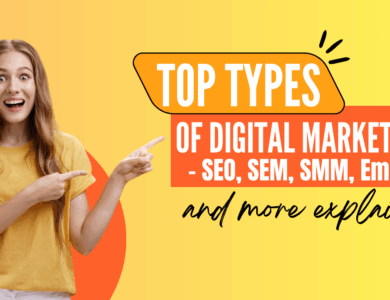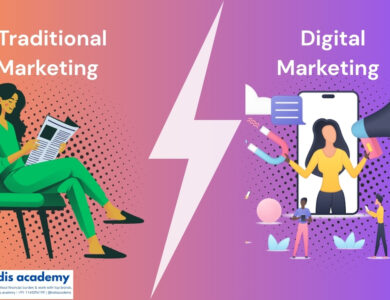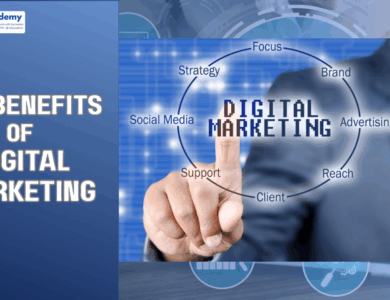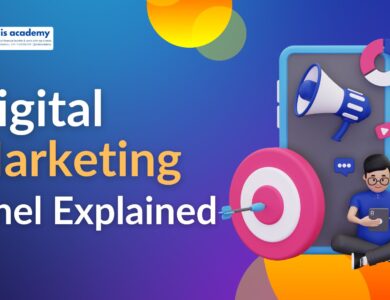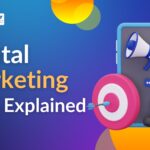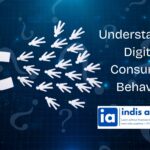10 Common Digital Marketing Myths You Need to Stop Believing

10 Common Digital Marketing Myths You Need to Stop Believing
If you’ve ever found yourself questioning whether social media really sells or if SEO is just a “one-time thing,” you’re not alone. In the ever-evolving world of digital marketing, misinformation spreads fast — and myths run deep.
Many entrepreneurs, marketers, and even seasoned business owners unknowingly fall for outdated ideas or half-truths. These misconceptions don’t just confuse — they cost time, money, and opportunities.
Let’s take a walk through the digital landscape and uncover the 10 most common digital marketing myths you need to stop believing. It’s time to trade fiction for facts — and make smarter marketing decisions.
Myth #1: Digital Marketing is Only for Big Brands
Once upon a time, only corporate giants had the budgets to run national campaigns. But today, digital marketing has leveled the playing field.
With the rise of social media, free SEO tools, and affordable PPC campaigns, even a small business in a local town can reach a global audience.
Reality: Digital marketing is highly scalable. You can start with as little as ₹500 or $10 on ads and gradually scale based on ROI.
Real-World Insight: Small businesses are thriving on platforms like Instagram Reels and WhatsApp Business. A local bakery can run a geotargeted Facebook ad and sell out inventory in a day. A freelance coach can build a 6-figure business with just LinkedIn and email marketing.
The tools are accessible — what matters is strategy, consistency, and understanding your audience.
Myth #2: SEO is Dead
Every few years, a bold claim makes its way through the marketing world — “SEO is dead.” Usually, it follows a major Google algorithm update.
The truth? SEO isn’t dead. Bad SEO is dead.
Google is smarter than ever. It now prioritizes:
- Search intent
- Helpful content
- Page experience
- Core Web Vitals (site speed, responsiveness)
- Mobile-first design
Reality: Modern SEO focuses on content quality, user experience, and technical health — not keyword stuffing or shady backlinks.
Pro Tip: Brands that invest in long-form content, topical authority, schema markup, and internal linking are dominating in competitive spaces. Organic traffic remains one of the highest ROI marketing channels.
Myth #3: Social media is Free Marketing
Yes, signing up for Facebook, Instagram, or LinkedIn doesn’t cost anything. But turning followers into customers? That’s a different story.
Building a brand presence, engaging consistently, and running targeted ad campaigns all require time, tools, or money.
Reality: Social media has both visible and hidden costs — content creation, ad spend, scheduling tools, and community management.
Strategic View: To make social media profitable, you need a defined content calendar, clear CTAs, analytics review, and audience testing. It’s a marketing channel, not a miracle.
Myth #4: Email Marketing is Outdated
With all the buzz around reels, TikTok’s, and AI-driven chatbots, email might feel like yesterday’s news.
But here’s a fact: Email remains one of the highest converting channels in digital marketing.
- Average ROI: $36 for every $1 spent
- Ideal for customer retention, upselling, and nurturing leads
- Supports deep personalization, segmentation, and automation
Reality: Email marketing isn’t dead — it’s evolving. The winners are those who go beyond newsletters and build smart automations.
Advanced Tip: Create behavior-triggered email flows (cart abandonment, product interest, reactivation) to keep conversions flowing — passively.
Myth #5: More Traffic Equals More Sales
Imagine this: Your website just got 10,000 visitors in a week — but no sales. What went wrong?
That’s the problem with this myth. Traffic without targeting is just noise.
Reality: You don’t need more traffic; you need the right traffic. It’s about relevance, not just reach.
Conversion Science Insight: Focus on optimizing:
- Offer alignment (is your CTA clear?)
- Landing page speed & design
- Trust signals (testimonials, reviews)
- Audience targeting (are you attracting your ICP?)
Myth #6: If You Build a Website, People Will Come
You spent days perfecting your website, launched it — and waited.
Crickets.
Reality: A website without promotion is like a shop without a signboard on a deserted street.
Actionable Strategy:
- Submit your site to Google Search Console
- Promote it via email, social, guest blogs
- Run introductory paid campaigns
- Use backlinks from partners, directories, press
Traffic is earned, not guaranteed.
Myth #7: You Must Be on Every Platform
There’s pressure to be everywhere — TikTok, YouTube, Threads, X, Facebook, Instagram, LinkedIn… but does your audience even use all those?
Reality: You don’t need to be everywhere. You need to be where your audience actually spends time.
Efficiency Rule: Choose platforms based on:
- Demographics (where your buyers hang out)
- Content strengths (video, images, writing)
- Conversion potential (B2C vs B2B intent)
Focus beats FOMO every single time.
Myth #8: Digital Marketing Delivers Instant Results
In a world of same-day delivery and viral reels, we crave fast wins. But most effective digital strategies take time.
Reality: SEO takes months. Email lists need nurturing. Ads require testing. Trust needs to be earned.
Timeline Expectations:
- SEO: 3–6 months
- Email list building: 30–90 days for traction
- Paid Ads: 2–4 weeks for real learning phase
- Content ROI: 3–9 months (for evergreen growth)
Digital marketing is an investment — not a vending machine.
Myth #9: Negative Reviews Kill Your Brand
Getting your first 1-star review can feel like a punch in the gut. But it’s not the end.
Reality: A few negative reviews won’t destroy you — they actually build credibility.
Consumer Psychology: Studies show customers trust a product more if it has a mix of positive and some moderate/negative reviews. 100% 5-star feedback often appears “too perfect.”
What matters:
- How quickly and politely you respond
- Whether you take ownership
- How you resolve issues publicly
Use negative reviews as opportunities to improve and showcase your brand’s values.
Myth #10: Great Products Sell Themselves
We wish this were true. But even the best product needs the right positioning, promotion, and storytelling to succeed.
Reality: Marketing bridges the gap between your product and your customer. Without it, even great products go unnoticed.
Case in Point: Think of all the brilliant startups that failed due to poor marketing — and average products that dominate due to brilliant branding (hello, bottled water brands).
Marketing helps:
- Define a unique value proposition
- Communicate it clearly and emotionally
- Drive demand through visibility and trust
Learn More:
- What Is Digital Marketing? Definition, Basics & How It Works
- Want a Career in Digital Marketing? Here’s Everything You Need to Know
- The Future of Digital Marketing: How the Metaverse Is Redefining Customer Experience
Final Thoughts: Don’t Let Myths Drive Your Strategy
The digital world is dynamic. What worked yesterday might fail today. But one thing remains true: smart marketers stay curious, data-driven, and open to change.
By letting go of these outdated beliefs, you’ll:
- Make better strategic decisions
- Avoid wasting your budget
- Focus on what actually works
Whether you’re just starting out or scaling up, remember:
- Test everything
- Invest where ROI lives
- Never settle for what you “heard”
Truth wins in digital marketing. So, ditch the myths — and build your strategy on facts.
